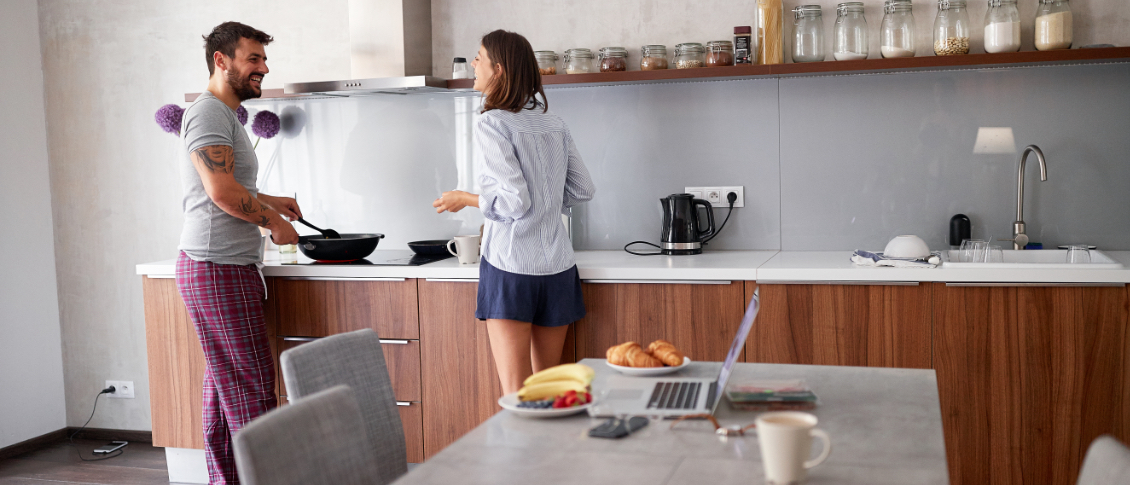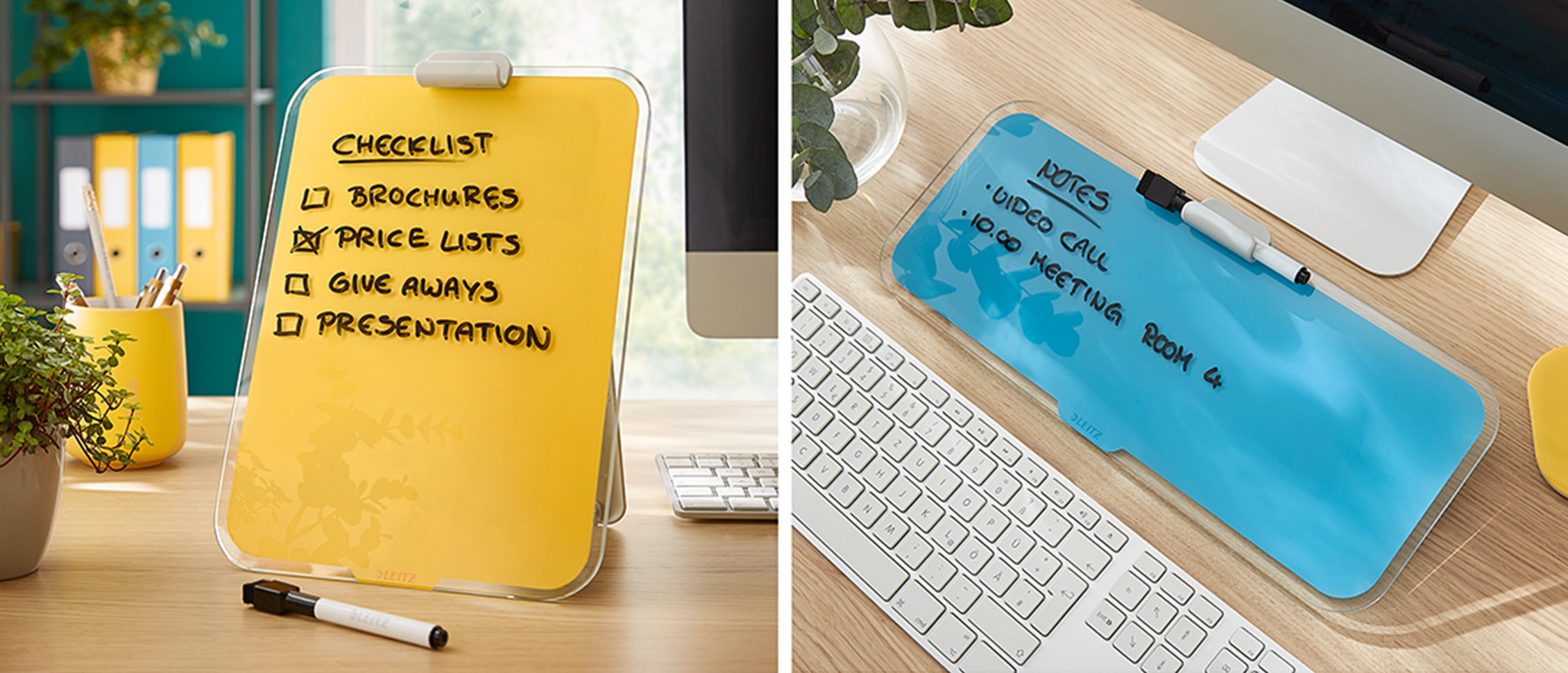How to Minimise Distractions When Working from Home
18.05.2022

Working from home presents a great opportunity to take control of your working environment. With home working, you won’t have to put up with loud co-workers, a too-hot or too-cold office, or colleagues playing the radio too loud. However, working from home can come with its own distractions.
Instead of talkative colleagues, you could have to deal with family members or housemates who want to speak with you. You might be tempted to try to complete some household chores whilst you’re on a work call or send a message to a friend between tasks. All these things and more can distract you when you’re working from home, which can lead to you becoming behind on your work and stressed.

However, it is possible to work from home and stay focused on your work. Below are our top tips to keep distractions to a minimum when you’re remote working.
Stick to Your Usual Work Day Routine
Try to keep to your usual schedule for a work day. So, if you would usually get up at 7 am to have breakfast and get ready for the day before commuting to work, stick with this time to get out of bed when you’re working from home. Whilst it can be tempting to have a lie-in and roll out of bed five minutes before you need to log on, keeping to your usual routine will help to get you in the right mindset for the working day. This can be especially beneficial if you’re hybrid working and spend some days in the office and at home. Your body will find it easier to get up at the same time every day rather than changing.
If you would usually have a long commute, try using that time to go for a walk or take part in some other exercise. Alternatively, you could meditate or try journaling. Find an activity that can help you prepare for the day, so you feel energised and motivated from the get-go.
Plan Your Day
Planning your day is important wherever you’re working from, but especially when you’re remote working. Without your boss around, it’s up to you to keep yourself organised and working on the right tasks. It can be helpful to take a few minutes each morning to write a to-do list for the day. Write your list in order of priority so you know what is most urgent and what needs to be dealt with first.
A whiteboard is a great addition to your home office and is perfect for keeping track of your tasks and your schedule for the day. If you don’t have the space available for a whiteboard, a glass desktop easel can also do the job. Using a wipe-clean note-taking tool means you can easily re-order your tasks if a new project comes in during the day and you need to re-prioritise.

Focus on One Task at a Time
This is perhaps the most important tip to minimising distractions when working from home. When working, you should only focus on the task at hand, and make sure it has your full attention. You probably wouldn’t watch television whilst you’re working in the office, so you shouldn’t have the TV on when you’re working from home. If you were attending a meeting in person, you probably wouldn’t also be answering emails, so you shouldn’t multi-task whilst taking part in a virtual meeting.
It can be helpful when working to turn off any notification pop-ups you might have on your computer for emails or instant messaging. These can cause a distraction and result in you attempting to deal with more than one task at a time. It might not be appropriate to have them switched off permanently, as you may have to sometimes deal with an urgent task that needs your immediate attention. However, where possible, you should block out some time here and there for deep focus on work. This will help you to work more efficiently and usually with better results.
Turn Off Your Personal Devices
As well as taking away notification distractions on your work device, you should also switch off your personal device. Your phone has a whole host of opportunities to distract you from work, whether it’s scrolling social media or messaging friends. The easiest thing to do is to turn it off completely so it’s not available to use.

If you need to keep your phone on for emergencies, set it to Do Not Disturb and place it away from your desk so it’s not in sight. Most phones will allow you to adjust the Do Not Disturb settings so it will only notify you if specific chosen people try to call or message – for example, your children’s school or your partner. This way, you can focus on your work with the peace of mind that you’ll hear your phone if it’s something urgent.
Organise Your Workstation
Having an organised workspace is essential to keeping focused when working from home. This applies whether you have a dedicated home office or a space in a multi-use room. Whatever your home office setup, you’ll need the best working from home tools to work productively and efficiently.
Letter trays are a simple way of keeping an organised desk. Rather than having papers strewn across your desk that need to be dealt with, assign a “to do” tray, perhaps also with an “in progress” tray and a “to be filed” tray. This is an easy way of keeping on top of your work and can also prevent the distraction that comes with clutter on your desk.
If you have a dedicated home office, you’ll want to keep clutter to a minimum across the whole room. Working in a tidy environment will help you to keep focused on your work and will also save you time when your paperwork and tools are exactly where they need to be. The right home office storage can help to keep your space organised and can also be used to keep personal items tidied away in a dual-use room.

Use a ‘Do Not Disturb’ Sign
If you have other people in your home who might cause a distraction whilst you work, try to communicate with them when you’ll need time to focus. Use a ‘do not disturb’ sign, either on your home office door or on your desk to indicate that you shouldn’t be interrupted. If you have teenagers or older children, it can be helpful to provide a whiteboard for them to write down any requests they have – you can then help them when you take a break from work.
A more visual aid can be helpful, especially if you have younger children. For example, you could hang a green sign when it’s ok to talk to you and a red sign for ‘do not disturb’. You could even have an orange sign for when you’re available only if it’s really required.
Working behind a barrier, such as a door or even a makeshift curtain hung behind your workstation, can also help to create more distance between you and others in your home. If you’re able to create a barrier, you could leave your status sign attached to the door or curtain. This will stop people from entering your working area in the first place, which could otherwise cause a distraction even with a ‘do not disturb’ sign.
Use Noise-Cancelling Headphones
The right home office gadgets can be perfect to minimise distractions when you’re working from home. Noise-cancelling headphones should be part of your work from home essentials, helping to block out any noise from around your house. This is especially helpful if you’re working in a house with housemates, or children, or a partner who is also working from home and having to take calls and meetings. It can be incredibly frustrating to try to work with someone else’s music, chatter, television, or even the doorbell ringing and causing you to lose your train of thought.
Noise-cancelling headphones use a frequency to drown out regular household noises, but they work best when paired with some sort of music. It's important to find the right background noise that won’t add to your distractions - you might prefer to work with relaxing instrumental music or ocean sounds, for example.
Use the Pomodoro Technique
It’s important to take regular breaks throughout the day. Your brain won’t be able to stay focused for hours at a time, and you may be more prone to finding distractions if you have been working too hard for too long. Scheduling breaks gives you some downtime and a chance to reset, so you can return to work energised and ready to focus.
One way you can ensure you get plenty of breaks is to utilise the Pomodoro Technique. This involves setting a timer for 25 minutes and fully concentrating on your work during this period. You can then take a 5-minute break to stretch, scroll through social media, or have a cup of coffee. You do this four times and then you take a longer break of around 20 or 30 minutes. It may be that you need to adjust the timings to find what works for your energy cycles.
The important thing is to fully focus on your work for the longer periods and then give your brain a chance to fully detach from work during the breaks. This will help you to stay focused when you need to. You’ll probably find you’re less inclined to be distracted when you know you only have to focus for a short period and you’ll have free time soon.
Leitz has a huge range of home office essentials to create an efficient and relaxing working environment.
Read more about working productively from home:
Could Creating a Greener Home Office Also Save You Money?
Can You Use Technology to Improve Your Home Office?
The Best Apps to Help You Stay Organised Working from Home